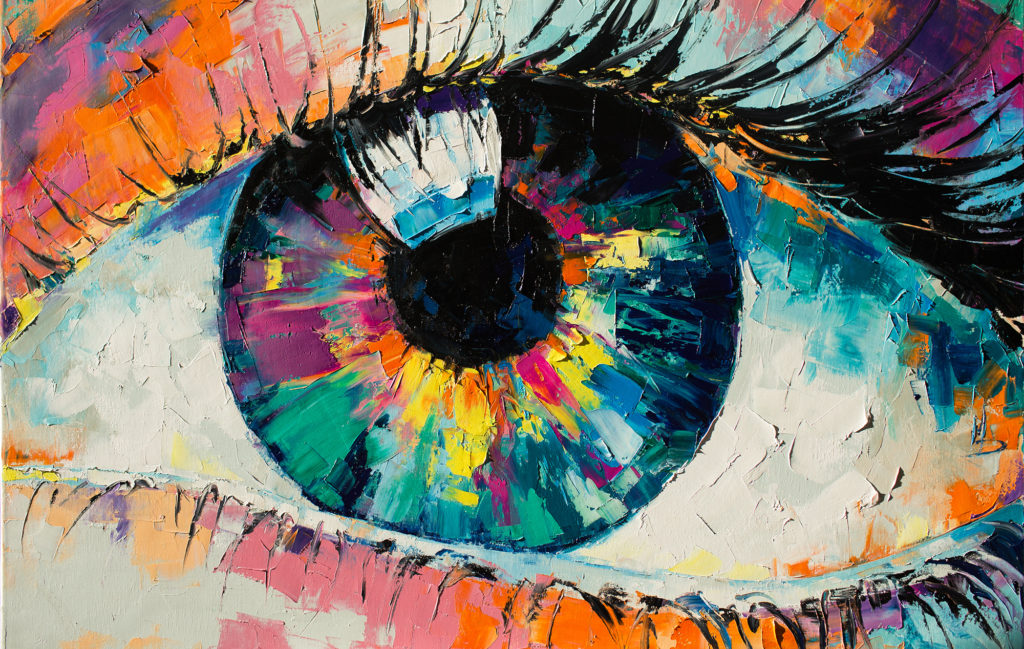The Development of Trump Art: From Early Critiques to Contemporary Point Of Views
The Development of Trump Art: From Early Critiques to Contemporary Point Of Views
Blog Article
Diving Into the Diverse World of Artistic Expression: From Surrealism to Abstract Realism
In the realm of imaginative expression, from the dreamlike landscapes of surrealism to the intricate play of light and kind in abstract realism, artists have actually continually pushed the limits of creative thinking and imagination. As we explore the diverse globe of art, we are offered with a tapestry of designs, techniques, and viewpoints that challenge our understanding and prompt consideration.
Surrealism: Letting Loose the Subconscious
Surrealism, a progressive creative motion of the 20th century, explored the depths of the subconscious, revealing a globe of dream-like images and unusual associations. Pioneered by artists like Salvador Dali, René Magritte, and Joan Miró, Surrealism sought to challenge the traditional methods of seeing and comprehending art. Via strategies such as automatism and desire evaluation, Surrealist artists intended to touch right into the subconscious mind to expose concealed facts and wishes.
Among the crucial elements of Surrealism was the emphasis on the unreasonable and the exceptional. By combining unexpected components in their jobs, Surrealist musicians aimed to create a sense of disorientation and shock in the visitor. This disturbance of logic and reason was meant to prompt a much deeper exploration of the subconscious and the mysteries of the human subconscious.
Abstract Realistic Look: Redefining Understanding
Challenging typical creative borders, Abstract Realistic look redefines understanding through the blend of identifiable aspects with abstract forms. This innovative strategy to art incorporates the representational precision of realism with the creative liberty of abstraction, using audiences a distinct aesthetic experience that triggers them to question their perception of reality.
In Abstract Realistic look, artists make every effort to catch the essence of their topics while likewise instilling their collaborate with a sense of depth and complexity with abstract elements. By blending the familiar with the strange, these artists invite target markets to engage with their pieces on numerous levels, urging them to check out the subtleties of shade, form, and structure.

Cubism: Fragmenting Truth
Utilizing geometric forms and fragmented viewpoints, Cubism changed the artistic depiction of fact in the early 20th century. Established by Pablo Picasso and Georges Braque, Cubism looked for to challenge conventional ideas of perspective and representation. By damaging down objects and figures right into geometric forms and presenting them from numerous perspectives all at once, Cubist artists aimed to catch the significance of the subject instead than its actual look. This method not only deconstructed reality however likewise stressed the monotony of the canvas, paving the way for future abstract art motions.

Cubism can be classified right into 2 major stages: Analytical Cubism, identified by monochromatic color design and intricate, fragmented forms; and Synthetic Cubism, which incorporated collection components and brighter shades the original source right into the structures. With these unique phases, Cubism influenced not only paint yet additionally layout, design, and sculpture. trump art. Its effect reverberated throughout the art globe, motivating artists to explore brand-new means of translating and representing the globe around them
Expressionism: Emotions on Canvas
Checking out the depths of human emotions through meaningful and brilliant brushstrokes, Expressionism emerged as an extensive imaginative activity in the investigate this site early 20th century. Unlike previous art movements that concentrated on depicting the exterior world, Expressionism looked into the interior realm of the musician's psyche, intending to evoke raw emotions and prompt visceral feedbacks from audiences.
Expressionist artists, such as Edvard Munch, Egon Schiele, and Emil Nolde, denied standard ideas of elegance and realistic look in support of distorting kind and color to share subjective sensations. Using exaggerated brushwork, strong shades, and altered figures assisted produce a feeling of unease, alienation, or interest in their jobs.
One of the most well-known instances of Expressionism is Munch's "The Scream," which captures the extreme anxiety and misery of contemporary life through its swirling, distorted figure against a blood-red skies. Through their emotionally charged works, basics Expressionist artists sought to test standard creative standards and supply a window right into the unstable midsts of the human spirit.
Contemporary Art: Developing Point Of Views

Among the specifying attributes of modern art is its continuous advancement and capacity to adjust to transforming social landscapes. Musicians are increasingly incorporating innovation into their method, blurring the lines in between the physical and electronic worlds. This blend of mediums enables innovative ways of storytelling and involving with target markets in a much more interactive manner.
Additionally, contemporary art often functions as a platform for social discourse, attending to pushing concerns such as identification, politics, and the atmosphere. Musicians are using their work to spark crucial discussions and prompt thought, clarifying the complexities of the globe we reside in. As perspectives remain to advance, modern art stays a dynamic and prominent force in forming our cultural landscape.
Verdict
In conclusion, the globe of creative expression includes a wide variety of designs and motions, each with its very own distinct strategy to conveying meaning and feeling. From surrealism's expedition of the subconscious to abstract realistic look's redefining of understanding, and from cubism's fragmentation of fact to expressionism's portrayal of feelings, art remains to evolve and challenge perspectives - trump art. Contemporary art reflects the ever-changing globe we reside in, offering brand-new means to interpret and understand the intricacies of our reality
As we check out the diverse globe of art, we are presented with a tapestry of designs, strategies, and viewpoints that challenge our understanding and prompt contemplation. Its impact reverberated across the art globe, inspiring musicians to check out brand-new ways of representing the globe and translating around them.

Report this page